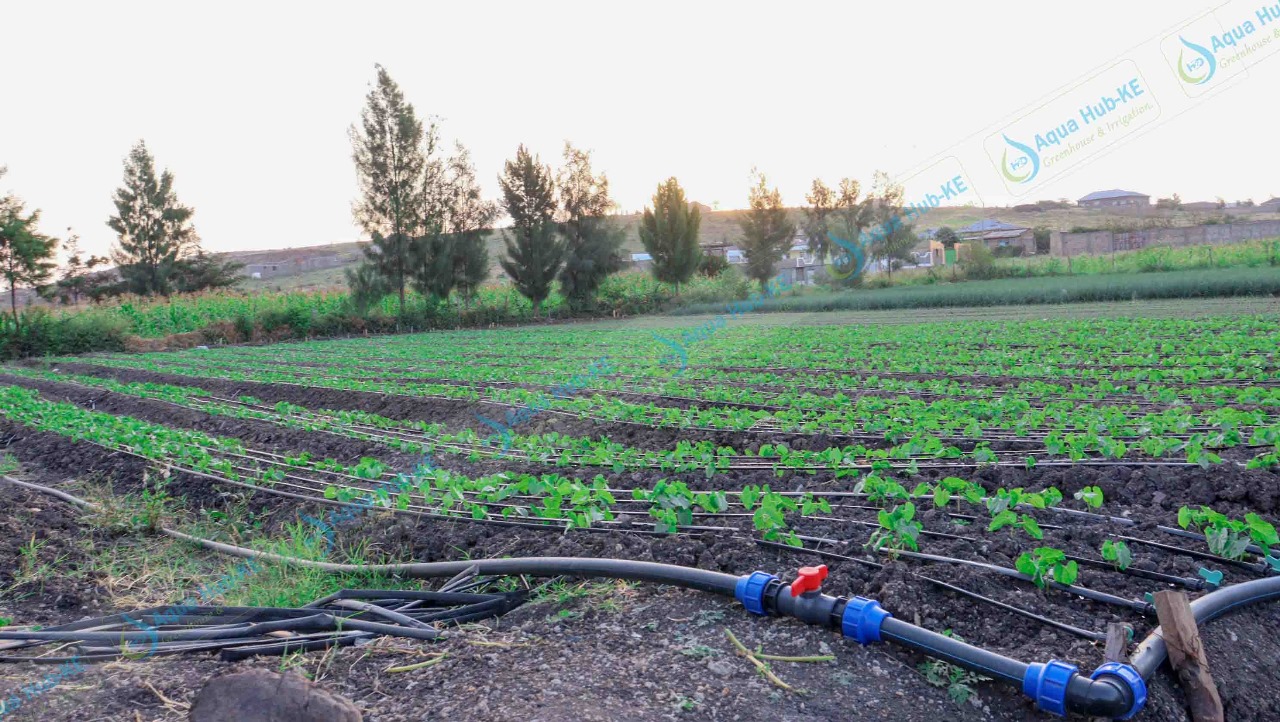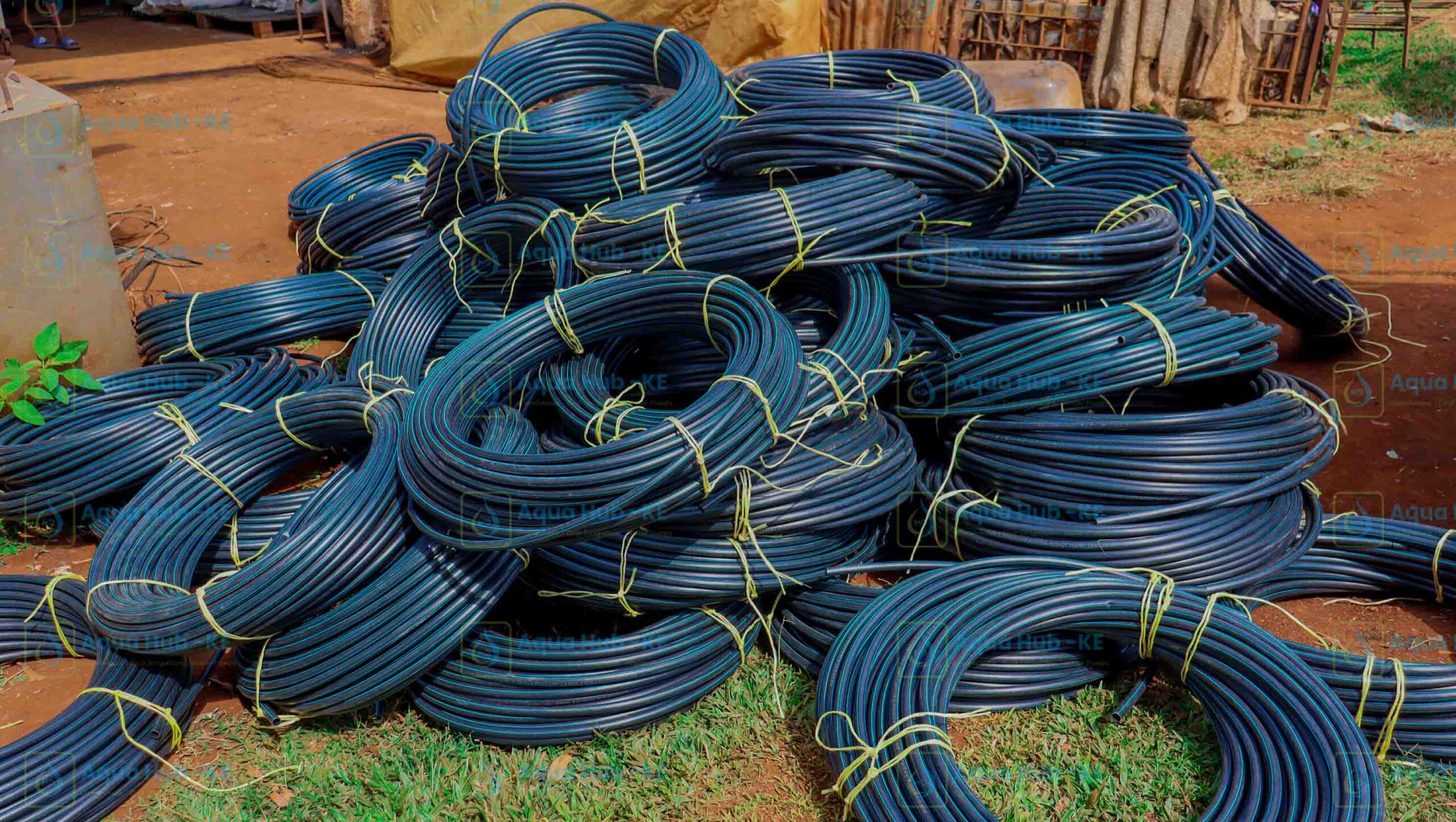Blog
Drip Irrigation Kit Price in Kenya | Best 2025

Drip Irrigation Kit Price in Kenya. Aqua Hub’s Drip Irrigation Kit is customized set of driplines and connection pipes to provide optimal and low water usage to plants. Our drip kits are mostly designed for vegetables, onions, garlic, and fruits (watermelons, strawberries and paw paws).
We focus on providing full support including consultation, supply and on-site installation of drip irrigation kits to farmers at affordable costs.
Call 0790719020
Why Buy Aqua Hub Drip Irrigation Kit
Our drip irrigation kits are complacent with the industrial standards because of their UV treated nature and durability. Designed from polyethylene compounds and UV reinforced thus ready for use in harsh sunlight and cold conditions.
We use top quality HDPE pipes on the mainline connection and compression fittings. This ensures flexibility in your irrigation system and allows you to repair and conduct maintenance in future with ease.

Our Driplines come in wall thickness of 0.3mm and 0.4mm sizes. All available in emitter spacing of:
- 15cm spacing
- 20 cm spacing
- 30 cm spacing
Drip Kits Technical Data
- HDPE Pipes and Fittings
- UV treated Polyethylene Driplines
- Dripline Wall thickness (0.3mm, 0.4 mm)
- Flow Rate of 8 liters per hour
Drip Irrigation Kit Price in Kenya
Our complete 1-acre drip irrigation kit price in Kenya is KES 140,000 to KES 180,000. Prices depend on the number of driplines required per bed.
Learn more: Call 0790719020
Best Drip Irrigation Kit and Price in Kenya
To buy the best drip kits in Kenya, Aqua Hub LTD known for quality irrigation accessories is arguably your top consideration. Quality customer service and professional irrigation services awaits you.
Call 0790719020.
Drip Irrigation Kit Price | System Components
- Main Pipe – we prefer HDPE, but PVC pipes are also applicable.
- Sub mainline Pipe – low diameter HDPE Pipe to enhance the idea of farm section irrigation.
- Tank Connection – to make it easier for connection of mainline pipes to the tank
- Screen or Disc Filters – to remove dirt in the irrigation water. Filtration is important to prevent clogging of the driplines and allow seamless irrigation.
- Compression fittings – HDPE Tee, Elbow, Couplings, Male and Female adapters for main and submain pipe connection.
- Ball Control Valves – to regulate the flow of water in the irrigation system.
- Saddle Clamp – enhances the connection of risers to the sub mainline pipe.
- Drip Fittings – to connect driplines to the risers.
Which Dripline is Best for My Plants?
- 15 cm dripline – near space crops including onions, garlic, carrots.
- 20 cm spacing – medium spaced crops planted in rows most commonly vegetables, kales, tomato, capsicum, broccoli, strawberries.
- 30 cm dripline – cabbage, watermelon,
How Drip Irrigation Kits are Laid and Designed on Farm
To achieve reliable and uniform water supply via drip irrigation, the farm must be divided into sections often known as raised beds. Each bed will require 2-4 driplines as per the number of planting rows it accommodates. The crop type will determine the spacing and rows that will be grown in each bed.
For high value crops such as onion and garlic you can use 3 or 4 driplines per bed. Capsicum, strawberry, green vegetables and tomato require two driplines per bed.
Start Profitable Farming with Drip Irrigation Kits
Are you eager to start crop farming but don’t have a reliable irrigation system or profitable crop knowledge? Aqua Hub helps farmers get readily available irrigation systems including driplines, sprinkler kits and rain hose. We also handle all the installation work with top expertise, to ensure your plants are ready to thrive and provide value.
Start by preparing your farm through clearing of vegetation, objects such as roots, rocks and trees remain. What follows is land cultivation and breaking down the soil into fine particles. Once done, prepare beds of 1 m width and 50 – 100 m long. Then the farm is ready for installation.
Drip Irrigation Connection Step by Step
- Begin with trench digging to accommodate safe mainline and sub-mainline pipe underground connection.
- Connect the mainline pipe to the source water point or tank.
- Connect your back flow preventer, pressure reducer and filter to the mainline section near the water source
- Lay the rest of the mainline and sub mainline pipe into trenches and connect them using compression fittings.
- Make the sub-mainline to the lateral connection.
- Complete the connection by connecting the driplines to the lateral or riser pipe.
- Flush the system
- Connect end caps on pipe ends to seal water flow.
What to Consider when Choosing an Irrigation System
Some crops such as leafy greens are irrigated using either drip or sprinkler irrigation systems. Both irrigation methods are good, offer reliable and sufficient irrigation but other factors may influence which method to use. The factors are:
- Soil type – the soil texture, compactness and depth matters. For light soil, drip irrigation is ideal. Sprinklers could result in soil degradation.
- Terrain – the farm terrain determines which method will work best. As often, drip irrigation works in flat areas and thus slopy terrains could be better with sprinklers.
- Soil Fertility – use drip kits if you are farming on highly degraded soil as you can use the method to effectively add fertilizers to the root zones of crops.
- Cost – your budget is another concern as well. Though drip kits are highly effective and water saving, it could be more costly compared to sprinklers.
- Water source – the water source also determines which system will be convenient. If you are sourcing from a borehole to tank, drip method is ideal. For rivers or dams, sprinklers could be ideal but also require proper filtration.
